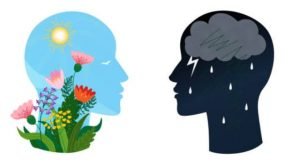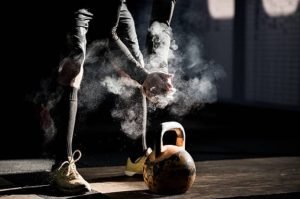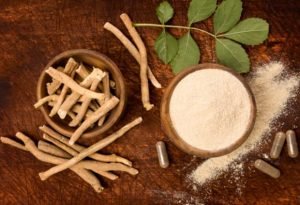
by admin | Jun 11, 2022 | Health
Facial Pareidolia
Faces Are Everywhere Around Us, Even In Inanimate Objects This complicated title might even seem a bit scary at first glance but it is actually the definition of something rather simple.
Have you ever seen the facade of a house or a weirdly shaped rock and thought, “Hey, this kind of looks like a face”? Well, it turns out that you don’t need to have an extremely vivid, childlike imagination in order to spot a face or an emotion in different items. In fact, some animals can do it too. This juxtaposition is exactly what facial pareidolia means, and it’s been around for centuries. Here we explain why and how this fun phenomenon occurs.
How It Works

As we mentioned before, the simplest explanation for facial pareidolia is the tendency to see faces where there are none. It occurs naturally mainly because our brains are prone to recognizing patterns.
When we see something in relatively the same proportions and spatial arrangement as two eyes and a mouth, it’s easy to imagine a face even if the object itself has nothing in common with one. After our brains have made this assumption, our second reaction is to determine the emotion and determination it has towards us or the environment.
Is the perceived face looking at us, is it happy, scared, or sad?
All these give us information on what we should do next and how we should react towards it or our common environment. If we should smile, look at something around us, or even run.
Our minds are so used to this process that we give inanimate objects direction of gaze and even feelings sometimes. It has been proven through different studies that the mechanisms we use when seeing a human face showing a specific emotion are the same as when we experience facial pareidolia.
And this is why these items can look scared, excited or even resemble a certain character we know of.
How It Happened

Facial pareidolia is a common condition related not only to our biology but our evolution. It dates back to so long ago that it’s highly likely some of the species we originated from had the same ability. This is because of the valuable information we can extract from other people’s faces.
If they’re scared, for example, it might be an indicator that we don’t know of something that’s a threat to us as well. If they’re angry, they might be hostile, if they’re kind, they might help us and so on and so forth. This is why from an evolutionary standpoint recognizing faces is so important that it would be better to be overly sensitive to them (like facial pareidolia) than not to be sensitive enough.
And although evolutionary cues often take premise on our reactions (angry ones mean run, scared ones – run faster, and so on), it’s been proven that our own recent experiences also have a massive influence on how we perceive facial expressions.
The specific connection we make with emotion and attractiveness is often based on what we saw and thought mere seconds ago. Studies were conducted to prove this, and they show that when we see a few happy faces in a row, it’s more likely to deem the next face happy as well.
If we see the same face after a row of angry ones, however, we wouldn’t have the same opinion about it. This conditioning is also true if it’s not a real person we’re seeing – our perception about paintings and faces we find in everyday items also changes based on what we saw last.
So it would appear evolution is not the only force at play here.
To Wrap It Up
The more you think about it, the cooler this phenomenon gets. From a practical perspective, it shows that our brains can do some pretty complicated processes on the spot. Not only that, but we recognize human emotion so well we can even give inanimate objects feelings.
From an evolutionary standpoint, facial pareidolia is proof that we are social creatures – if we weren’t, we wouldn’t need to understand or even register that someone else is like us. Based on such little fun phenomena that are a part of the human condition, we can certainly say that life really is fascinating. How often does this happen to you and what was the last face you saw? Comment below!

by admin | Jun 11, 2022 | Health
How To Manage Injuries | Part 1- Types of Injuries
We all know for a fact that doing regular training has numerous health benefits. However, most personal trainers that try to get you motivated to start working out, never really tell you about the possible downsides of training. Those are namely the injuries one may experience throughout their training process. Now, if you have been an active trainee for a while, you know the impact that even a small injury can have.
Usually, once a small injury is present, we tend to completely cut off training and sooner or later, nutrition gets ditched too. But the best part is that injuries can be managed and prevented, in a way that will not cease the momentum you’ve gathered up until the point of injury. In this article, we’ll go over common sports-related injuries, to discuss types of injuries, how to handle them & how to prevent them in the future.
Types Of Injuries

It is important to understand that there are different types of injuries, which in turn will be treated in different ways. However, when it comes to sports injuries, there are two main types defined by physical therapists – Acute injuries & Chronic injuries.
Acute injuries happen right away when the active components of your musculature and skeleton, are exposed to an amount of stress, greater than what they can handle. This type of injury is mostly to blame on falls, poor warm-up, bad exercise form, and often times, using excessively heavy training loads. The most common acute injuries are the following:
- Sprains/bruisings
- Fractures
- Dislocations
- Ruptures
- Cracked/broken bones
- Tears (muscle/ligament/tendons)
On the other hand, chronic injuries develop gradually in time as a result of consistent overexertion, poor recovery, wrong movement patterns, and often times, poor treatment of acute injuries.
As you may or may not know, when you take your muscles through a more intense workout, you technically create micro-trauma in the working tissues. In the period after the workout, the body aims to recover that micro-trauma to ultimately make all those tissues stronger and ready for bigger loads. However, there is a certain recovery threshold, due to the fact that intensity by nature is strenuous and requires time to recover from.
If you consistently go beyond that threshold, sooner or later the degenerative processes in those tissues will be greater than the regenerative processes, thus creating chronic injuries. Chronic injuries are generally harder to recover from and can in fact return in time, even after you have treated them.
Here are the most common chronic injuries:

- Tendonitis (Inflammation of certain tendons in the body)
- Bursitis (Affects the cushions of the joints, muscles, and bones called “bursae”)
- Myositis (inflammation of muscle tissue)
- Chondrosis (Breakdown of the cartilage)
- Tenoperiostitis (Inflammation of tendons/muscles at their insertion points)
Acute Injury Treatment – Do’s and Don’ts
Acute injuries may happen to anyone and if not taken care of, they can grow into chronic injuries. This is precisely why you should know how to manage acute injuries in a timely manner. The quicker you do so, the fewer complications will follow afterward, and the quicker you will recover. Generally, at a sudden onset of an injury, there are two primary things that will help you – Resting & Icing the area.
At the moment of acute injury, you have already surpassed the tissues’ limit and there is no more room to engage them in any activity. Putting the injured area to rest will allow all recovery processes to happen as quickly as possible, thus leading to quicker healing. If on the other hand, you decide to continue the physical activity that led to this, you are setting yourself up for a serious chronic injury.
With most acute injuries, there is an immediate onset swelling around the injured area. Applying an ice pack may help reduce pain and swelling, during the first days of the injury. It is recommended that you put an ice pack on the injured area for 10-20 minutes, 2-3 times a day during the first 48-72 hours after the injury has occurred.
Contrary to popular belief, compression on the injured area will not actually help with the initial swelling. Even more so, a tight compression may even make things worse. By using an elastic band and compressing the area, you limit the blood flow to the spot, thus slowing down the recovery processes.
As we mentioned, it is often that an injured individual will completely cease all training activity until the injury recovers completely. However, in most cases, this is in fact the worst thing you can do. The benefits of physical activity still remain, even if a certain body part is injured.
For example, if your knee is injured, nothing is stopping you from training your upper body. In doing so, you will promote blood circulation and thus favor hundreds of recovery processes in the body, allowing the injury to heal faster. In short – Rest the injured area and continue doing exercises that don’t aggravate it. Your body will take care of the rest.
To Wrap This Up
Though training offers a variety of benefits, there are also certain risks involved, which should be considered. Injuries are something that can bring your gathered momentum to a stop. This is the reason why you should definitely keep an eye on even the smallest pain and take care of them in time. In the second part of this article series, we are going to give you actionable tips you can use to manage & prevent chronic injuries, to ultimately bring a healthy body in your older years.
See you there!

by admin | Jun 11, 2022 | Health
How To Manage Injuries | Part 2 – Injury management & prevention
Alright, in part 1 of this series, we went over the two main types of injuries – Acute & Chronic injuries. In case you did not read that article, let us briefly explain this further.
Acute injuries have an immediate onset, and happen when the working tissues’ capabilities have been exceeded, or a sudden clash/fall has occurred. These are best managed by letting the area rest and applying ice in the first 48-72 hours, as well as training around the injury in a way that won’t aggravate it.
On the other hand, chronic injuries happen gradually over time and are mainly caused by poor exercise form, overexertion, and suboptimal recovery protocols. Now, keep in mind, though these are two different types of injuries, poor management of an acute injury (even a small one), can snowball into a chronic injury over time.
If there are even small pains that persist, it is recommended that you do not neglect them and advise with a professional. Without further ado, let’s have a look at the best injury-prevention practices.
How To Prevent Chronic Injuries

Alright, as you already know, chronic injuries are primarily the end result of poor training decisions and poor recovery. And though that sounds bad, it actually means that chronic injuries are preventable! Here are our best tips to help you prevent injuries and enjoy a functional body for decades to come:
#1 Prime The Body For Exercise (Warm-up)

It is oftentimes that people neglect the warm-up in the beginning of their training sessions and go too hard too fast. Well, the fact of the matter is that preparing the body before you jump into hard sets, is the best way to prevent any type of injuries. Think about it – If you cold-start your car and put the pedal to the floor right away, what would happen? Something will break eventually.
Now here’s what a good warm up will do:
- Increase your heart rate
- Raise your temperature slightly
- Activate your muscle fibers (especially important before strength training)
The first two can be done with low-intensity aerobic activities, such as jogging, rope jumping or simply walking at a higher pace. Activating your muscle fibers is best done by gradually increasing the working weight, for the first 2-3 sets of your first exercise. All of this will prepare the body for heavier work afterward and will massively reduce the risk of injury.
#2 Use Proper Exercise Form
Whether you are a beginner trainee or someone who has a couple of years of experience, your main priority should always be your exercise form. If you sacrifice good exercise form for a couple of extra kilograms on the bar, you are setting yourself up for an injury, thus robbing yourself of progress.
Remember that each and every joint has a certain biomechanical position, at which it can safely exert the most force possible for its working muscle groups. Anything less than that and you are speeding up the wear and tear of your joints and ligaments.
#3 Eat well & Drink Water

When a person experiences an injury, more often than not the instinctive reaction is to look for creams & gels you can apply on the injured area, to speed up healing. For that exact reason, food & water intake are often underestimated when it comes to healing, recovery, and injury prevention. But if you think logically, you’d know that they are REALLY important and can be a powerful ally for maintaining a healthy skeleton & musculature.
This is simply because food contains essential nutrients, which the body can’t produce on its own, but needs for optimal health and recovery. Furthermore, specifically in the case of injuries, certain foods can actually increase inflammation, while others can mitigate it.
Here are our 5 best nutrition tips to prevent & treat injuries:
- Consume protein-rich foods that have a complete amino acid profile (All animal products for omnivores, a mix of grains for vegans/vegetarians)
- Drink enough water daily (2-4 liters depending on atmospheric temperature & activity levels. Avoid excessive thirst)
- Avoid deep-fried foods (Fried foods can increase inflammation)
- Include plenty of vegetables & fruits (Vitamins and minerals are just as important as protein, fats and carbs!)
- Include Omega-3 fatty acids (These can help mitigate inflammation and can be derived from fish and other sea food)
#4 Get Frequent Massages
One thing you should really acknowledge is the fact that your muscular system is REALLY complex and has many functional components. As you use it, your muscles & their fascia get fatigued, and even after solid recovery, they may feel stiff at one point.
The fascia is a thin layer of connective tissue that holds every organ, bone, muscle, and nerve fiber in place. As these active components go through stress, their fascia tightens up. This is exactly where deep tissue massages can come in handy, to release the fascia and rejuvenate the working tissues & their nerves.
Besides releasing the tension from the tissues, deep massages will also improve blood flow to the area. This in turn will allow the blood to deliver more oxygen & nutrients to the area, thus improving recovery and lowering the chance of injury. If you do training activity regularly, it is recommended that you get a massage at least twice a month.
#5 Stretch!
If you don’t like the idea of getting frequent massages, there are alternative ways to release the tension in the muscles & fascia on your own. Stretching is in fact the best way to do so and it can further be combined with foam-roller exercises that will allow you to release the tension in-depth.
It is recommended that you do your stretching exercises AFTER the training bout rather than at the start, where the goal would be to activate your muscle. Think of it this way – As you go into the workout, your goal is to recruit and activate more and more muscle fibers, by contracting the muscles (opposite of stretching).
Throughout the workout the muscles get fatigued and at the end of the training bout it is time to relax that tension, by implementing stretching exercises
#6 Use Joint Recovery Supplements
Besides managing training intensity, exercise form, and taking care of muscle maintenance, joint recovery supplements are also a viable injury-prevention option.
Here are our best picks for such supplements:
- Chondroitin – Helps recover the joints’ cartilage by stimulating its repair mechanisms
- Glucosamine – Helps with the recovery and formation of ligaments, tendons, joint fluid and cartilage (usually paired with chondroitin)
- Collagen – This is the most important protein of all connective tissues and as a supplement, it can help recover cartilages, tendons, and ligaments
Ultimately, these supplements won’t compensate for the lack of proper exercise form, nutrition & a methodical approach to training, so consider them a bonus!
Important takeaways
- Getting injured doesn’t necessarily mean you should stop training – Train around the injury by doing movements that won’t aggravate it
- The best strategy with an acute injury is to let it rest and working on gaining back the full range of motion once swelling and pain have subsided
- Chronic injuries are best prevented by practicing good exercise form and avoiding overexertion, as well as managing recovery windows
- Take care of your recovery by getting frequent massages, sufficient nutrition, as well as joint-support supplements

by admin | Jun 11, 2022 | Health
Superfoods & Their Effect On Health
For many people, the term “superfoods” sounds like just another marketing gimmick to make you believe in an easy solution to a certain problem. In reality however, superfoods are products that are proven to have a certain net benefit for human health, meaning they are actually functional and beneficial.
With this article, we’ll provide you with the basic information you need to know about superfoods, as well as a list of our favorites!
What Is Health, Even?
It is likely that traditional medicine has made some of us believe that health is dependent on one thing. However, you have to realize that the body is a complex machine and so is its health. By definition, health can be defined as the proper, balanced functioning of all bodily systems, active tissues and processes.
The thing here is that health is AUTOMATIC … Your body takes care of it all! You don’t have to think about digesting and absorbing essential nutrients. You don’t have to think about feeling sleepy, hungry or thirsty. You don’t have to think about waking up in the morning. All of this is automatic and ALL you have to do is feed the body the right nutrients for it to be able to sustain the healthy functioning of all those systems and tissues.
Macro VS Micro Nutrients

Now, if you know a thing or two about healthy nutrition, you probably know the terms “macronutrients & micronutrients”. If not, here’s the short story – Macronutrients are protein, fats & carbohydrates and they provide the majority of the energy our bodies need, along with essential nutrients.
Think of the term “essential nutrient” as something that the body needs but can’t produce on its own. Contrary to macronutrients, we have micronutrients, which include vitamins, minerals and electrolytes. These nutrients don’t really have a caloric value, but are intricately involved in a variety of processes, meaning that most of them too, are essential.
THIS is where superfoods shine!
The 5 Best Superfoods
Granted, health isn’t dependent on consuming just one “superfood”, but these are the exact foods that can help reinforce your body’s overall health. So let’s have a look at the top-rated superfoods & drinks!
1. Green tea

Herbs and teas are known to have a variety of active ingredients that have different effects on the body and its processes. The right combination of herbs can treat a variety of issues, which is why herbs are a big part of traditional medicine in many countries. More specifically, green tea is a Chinese herb, rich in antioxidants, polyphenols and some caffeine! Looking to fight inflammation and maximize your mental focus and energy levels? Get yourself some green tea.
2. Ginger
Some of the most potent ingredients have the strongest smell and taste and granted, ginger is one of them! Ginger is a root, used in Chinese traditional medicine to create a variety of different home remedies, teas and even some food products! This root has a variety of antioxidants that too have the anti-inflammatory & antioxidative effect on the body.
Ginger shines when it is time to treat acute and chronic inflammations and can also be consumed regularly as means of prevention for cardiovascular diseases.
3. Forest Fruits

If there’s one food group that we could call “stacked with goods”, well that would definitely be forest fruits! These sweet fruits have a load of antioxidants which are proven to reinforce immunity and improve overall health. Blueberries, raspberries, goji berries and strawberries are amongst the best-tasting, most nourishing superfoods one can add to their nutrition plan!
Final Thoughts
If you’ve covered your main nutrient requirements coming from protein, fats and carbs, it is time to add some sides to your meals! Or better yet, have a nice afternoon cup of green tea with ginger in the shade… If you liked this article, stay tuned on our blog as we are releasing content like this on the regular basis!
See you soon!

by admin | Jun 10, 2022 | Health
what causes sadness | Fact or fiction | Seasonal Affective Disorder?
Have you ever felt gloomy, sad, and kind of depressed when the seasons change? Have you ever thought that there may be a reason for that? Seasonal Affective Disorder (SAD) is a type of depression that is related to the changing of the seasons.
This is the period between the beginning of autumn to the end of winter months for most people. If you’ve never experienced it, you probably know someone that has. It is one of the most common types of depression.
But is it an actual thing, or are people using it as an excuse?
Let’s talk about being SAD

In most cases, people fall under SAD’s umbrella from October to April, in other more minor cases from April to September. Though a rare occasion, some people even experience it all year long. So that brings up the question of authenticity to this so-called depression. Before that, let’s point out the symptoms, which in most cases are:
- Feeling depressed for most of the day
- Losing interest in activities that were fun before that
- Bad sleep
- Less energy
- Overall feeling of lethargy
It may seem that some of these are just excuses to procrastinate and blame the “winter blues” for not wanting to go out of bed.
But a further insight on the topic sheds a different light. Let’s just put it this way – In more severe cases, there are even worse symptoms, such as finding it hard to concentrate as well as having suicidal thoughts.
What can cause SAD
Although there is no medical or professional conclusion on the actual cause, there are different opinions.
Your biological clock, or circadian rhythm, may be involved. For example, the reduced sunlight in the autumn-winter months may interfere with a person’s biological clock. Lack of sunlight may also cause a drop in serotonin levels that may lead to depression. The changing of the seasons could affect the melatonin levels in the body that play a major role in sleep patterns and mood.
A couple of unpopular opinions
One of the less popular opinions on the matter is that SAD may run in the family. Family members that have struggled with it could pass it on to the next generations, especially if the mother has struggled with SAD throughout pregnancy.
Having a bipolar disease could possibly play a significant role in the development of SAD. Professionals don’t place their chips on this theory because bipolar disease is, by itself, a clinical type of depression disease. Last but not least, statistically, SAD occurs in people that live far from the equator. This may be because of the longer summer days and decreased sunlight during the winter.
How to treat it

Regardless of how severe your specific case is, the matter shouldn’t be taken lightly, and you are best off finding means of treating the SADness. Here are some of the best ways to do so: Light therapy is the most famous treatment for SAD. It’s a bright light that people get exposed to every day during the light-deprived months. A person sits in front of a big lit-up box that shines them with 10.000 lux every day for 30 – 45 minutes. It’s usually done early in the morning.
Psychotherapy, also known as Cognitive behavioral therapy or “talk therapy”, is a type of therapy that helps people to cope with difficult situations.
It is considered that this type of therapy is more efficient when it comes to long-term effects. This is because its main objectives are to maintain a sane and safe environment for the recipient and get him out of the house.
Medication is a commonly used practice when it comes to any type of depression. People are divided on whether pills are the way to go when struggling with any type of depressive ignited disease.
And the most obvious way to go – vitamin D. Nutritional supplements of the vitamins could help improve the symptoms. Although some specialists find it inefficient, especially compared to the other three options, it is still considered to be a way to go.
To Wrap It Up
Seasonal affective disorder, or SAD for short, is a type of depressive mood that occurs at the same time every year. It’s most common in people living above 30 degrees latitude north and south (i.e., North America).
The seasonal changes are the primary contributor to this phenomenon because with shorter days comes less sunlight which can cause an imbalance in your brain chemicals like serotonin. But don’t worry! There are things you can do to help alleviate these symptoms before they get worse.
Some helpful strategies include taking vitamins D3 and B12 daily, drinking more water throughout the day, eating healthy foods, and exercising regularly. However, remember that the most powerful tool to deal with this is to be cognitive about it!
You can consciously DECIDE to be stronger than your environment and that happens once you realize that you don’t HAVE TO follow the main sequence.
Stay happy.

by admin | Jun 10, 2022 | Health
Shoulder Injuries & The Rotator Cuff | Part 1 – Anatomy & Common Injuries
When it comes to athletic performance, the shoulder is pretty much the most utilized part of the upper body. Practically, every exercise that targets a specific upper body muscle group, requires some kind of movement in the shoulder joint. Now, here is something important right away – The shoulder joint has the biggest range of motion out of all joints in the body. However, that big range of motion comes at the price of joint stability, making the shoulder one of the most vulnerable joints in the body.
Shoulder injuries are common and without a doubt the worst type of injuries. This is due to the fact that they basically force you to completely stop upper body training for some time. In this series of articles, we are going to look into the shoulder, its anatomy, functions, and exercises to help you strengthen it and prevent injuries. Of course, the superficial deltoid muscles are just one part of the shoulder, beneath which we can find the more important, stabilizing muscle groups.
Without further ado, let’s have a look at the shoulder, in-depth.
Shoulder Muscles Anatomy

The shoulder joint is a ball & socket joint, located between the humerus (upper arm bone) and the scapula. The main muscles of the shoulder joint are:
- The deltoids (Front, side & rear)
- Supraspinatus
- Infraspinatus
- Teres Minor
- Subscapularis
Now, though most of us focus mainly on the deltoids with overhead pressing movements & lateral raises, the last 4 muscles on the list above are often neglected. These 4 little muscles make up what we refer to as the “Rotator cuff”. (https://www.ncbi.nlm.nih.gov/books/NBK441844/)
The rotator cuff is what actually stabilizes the shoulder joint and if well-developed makes it far less likely for a shoulder injury to occur. Besides serving as a good injury prevention tool, a healthy rotator cuff will also make you stronger on every other upper body movement. This is especially valid for pushing movements, where the arms are unstable under bigger loads.
Functions of the shoulder

Each of the shoulder joint muscles is responsible for certain movements, so let us briefly explain those.
The Deltoids
The superficial muscles of the shoulder are the deltoids, which surround the shoulder joint from all sides. This is why the deltoids are further separated into 3 zones:
- Anterior (front) deltoids
- Medial (side) deltoids
- Posterior (rear) deltoids
The front deltoid head gives a rounder look from the front and is mainly engaged when you lift your arm up from the front. Next to it is the side deltoid, which can give the shoulder line a wider look and is primarily engaged when you lift your arm laterally (to the side).
Lastly, the rear deltoid gives the shoulders a complete, round look, and is primarily engaged when you do movements that pull the shoulder back. Now, though these are the main functions of the deltoid muscles, none of the 3 are ever completely isolated from one another.
These muscles always work in synergy but depending on the exercise, one of the 3 is emphasized.
The Rotator Cuff
Beneath the deltoids are the deep shoulder muscles, which as we mentioned, serve as stabilizers of the shoulder joint. The supraspinatus goes from the upper portion of the shoulder blade and attaches to the head of the humerus. Functionally, the supraspinatus absorbs some of the tension that falls on the shoulder joint and more importantly, keeps the head of the humerus firmly pressed in the shoulder socket.
The infraspinatus is one of the bigger rotator cuff muscles, as it covers most of the shoulder blade and again, attaches at the humerus head. In terms of functionality, this is the muscle that is primarily responsible for the external rotation of the shoulder but also stabilizes the shoulder joint at its socket.
Teres Minor is a relatively small muscle of the rotator cuff, which goes from the lower lateral portion of the shoulder blade, to the head of the humerus. The main functions of the teres minor are external rotation and arm adduction (the movement of the arm towards the midline of the body).
Subscapularis is the last of the 4 rotator cuff muscles and its main role is to stabilize the head of the humerus in the shoulder socket. Upon contraction, this muscle can also internally and medially rotate the humerus. Lastly, the subscapularis has adduction & extension functions at some angles.
Common Shoulder Injuries
Now that you know some basic anatomy of the shoulder joint, let’s talk about the most common sports-related shoulder injuries. The most common injuries of the shoulder are caused by inflammation, strain, or in the worst case, a complete rupture of one or more tendons of the shoulder musculature.
Now, there are a number of reasons why these injuries occur, but it is important to acknowledge this – The shoulder tendons (and tendons in general) have a weak blood supply as opposed to the muscles. This, therefore, leads to a lesser amount of oxygen and nutrients going to those tissues, making them far more susceptible to degeneration as we age.
The second most common reason for shoulder injuries is systematic overexertion with exercises that engage the shoulder, as well as a poor exercise form.
Common shoulder injuries include:
This is a displacement of the shoulder from its normal position in the socket. A dislocation is usually the result of an impact/fall or overexertion at an awkward angle.
The frozen shoulder is another common injury, which is usually the result of inflammation of the shoulder socket. A frozen shoulder is usually accompanied by stiffness, pain, and limited range of motion in the shoulder joint.
This type of injury is common in athletes who mainly use the upper body at high levels of exertion and awkward angles (think rock climbing). With resistance training, this type of injury often occurs during high exertion on heavy pressing movements like the bench press and the overhead shoulder press.
It is mainly expressed in shoulder pain, instability, and limited range of motion. Most tears are partial, but in severe cases, a tendon may completely come off the bone.
Bursae are small, lubricating sacs located in joints across the body. In the shoulders, the bursae are located between the rotator cuff & the bone above the shoulder (acromion).
Bursitis is essentially a condition that occurs when that lubricating sac gets inflamed and usually results in pain, tenderness, and a decreased range of motion.
Acknowledgments
In the second part of this article series, we are going to tell you more about the means of preventing shoulder injuries, as well as exercises to make the shoulders bigger and stronger.
Here are some important takeaways from this article:
- The shoulder joint is the most mobile joint in the body, but also one of the less stabilized, which makes it susceptible to injury.
- This joint is involved in all upper body movements, which is why training intensity & programming should be carefully managed
- Besides the superficial deltoids, the shoulder has stabilizer deep muscles known as the “rotator cuff”
If you have not yet experienced a shoulder injury, there are preventative measures you can (and should) consider, even if your shoulders are completely healthy. In the second article of this series, we are going to discuss shoulder stabilizing & strengthening exercises, as well as workout tips. All of these will ultimately help you maintain shoulder health and avoid any type of injuries.
See you in the next article!
Page 2 of 15«12345...10...»Last »



























